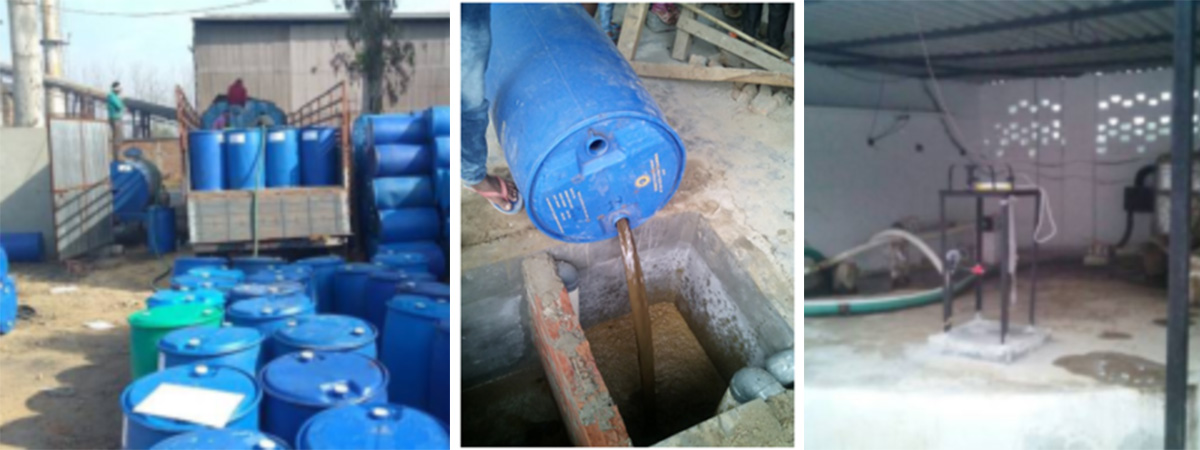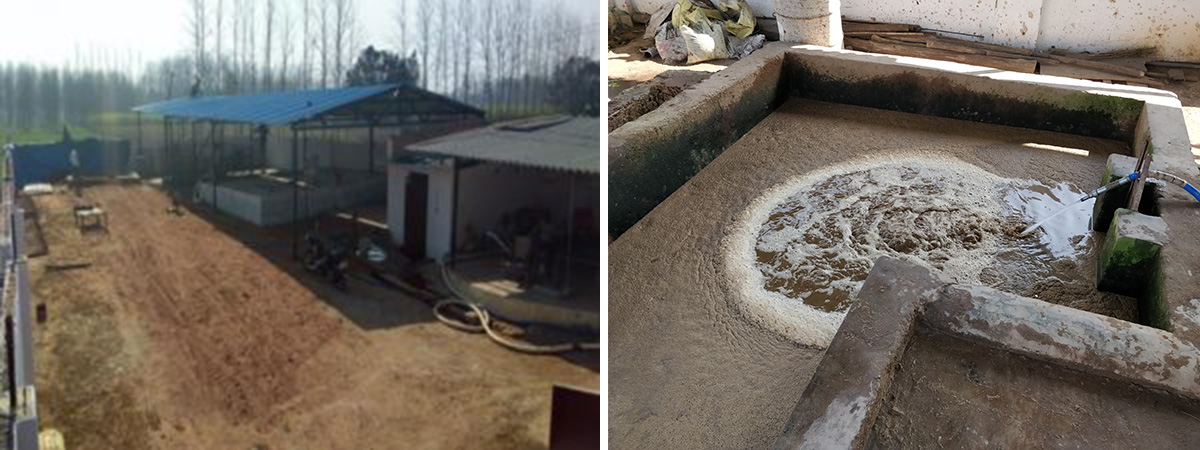Anaerobic Microbial Inoculum (AMI)
AMI are bacterial consortium which converts fecal matter into gases and water. They operate in anaerobic environment and are very sensitive to exposure to outside environment. These Bacterial consortiums are very robust and can operate between 5 degree Celsius and 45 degree Celsius.Anaerobic digestion (biomethanation) is an age old technology and is practiced mostly for biogas production. Methane generation from organic matter is very well documented in nature in wide temperature range employing psychrophilic, mesophilic or thermophilic bacteria. Psychrophilic methanogenesis is a very slow process and has a limited practical utility.
Biomethanation process involves large number of bacteria belonging to 4 groups (hydrolytic, acidogenetic, acetogenic and methanogenic) some of them being obligate anaerobe and some being interdependent on each other (symbiotics) for existence in the process. An equilibrium is required to be maintained in different steps for process to be sustainable or it leads to digester souring. Hence type of bacteria, their numbers and their susceptibility to climate, metabolites and toxicants are the key factors.
In view of developing technology for broad climatic conditions and situations, anaerobic microbial consortium was developed by following multiple process approach..DRDO developed anaerobic microbial consortium that has been characterized for fermentation efficiency (5 to 45oC), temperature fluctuation (diurnal, weekly, monthly), organic loading, starvation, freeze-thaw damages etc. and is proved to work in broader practical/climatic conditions. Elefo today is one of the largest producer of AMI in the country.
Elefo Biotech Private Limited (EBPL) has one of the largest Anaerobic Microbial Inoculum (AMI) generation facilities in the country. Its 600 thousand cubic meter generation facility consists of 5 tanks and it can produce over 2.4 million liters of AMI every year which is sufficient to cater to approximately bio-toilet needs of 1 million people every year. Above are some pictures of the plant.


